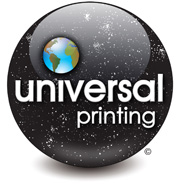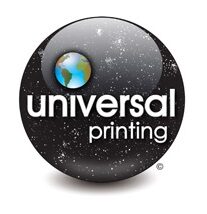Choosing Paper for Your Printing Project… Part 2
So you want to know even more about paper, eh? I don’t blame you. Our previous blog post went over some of the basics of paper, like the type of coating or finish, and caliper, weight and bulk. This post will cover opacity, brightness, shade and grain. Let’s get started!
Opacity is just a fancy way of saying the “show through” or “see though” quality of the paper: As in, how much will the printing on the other side of the page “show though.” Some papers are categorized as “opaque” sheets, as opposed to “offset” or “bond” papers. As a general rule, the thicker the paper, the less light gets though; however less bulky papers like vellum are thicker but less dense, leaving more chance for light (and printing) to come through. Text-heavy projects like annual reports, manuals, or product brochures should be printed on paper with more opacity.
Next in line come brightness and shade. It would sound like those are the same thing, but in reality they aren’t. Brightness is the overall visual appearance of the sheet in terms of how much light they reflect. As you may recall, ink is slightly translucent, which means the brightness of the paper effects the brightness and vividness of the color. Brightness is measured on a scale of 0 to 100; which is to say a sheet measuring as 96 bright is more reflective than a 92 bright sheet.
Shade refers to the whiteness of the paper. Don’t be fooled and think we’re talking about the color. If the paper is light blue, dark blue, yellow, red, cream, natural, eggshell, that is its color. Shade is all about white: Blue White, Yellow White (also called Cream White), and True White. Papers made with optical brighteners tend to have a cooler hue. These absorb warmer colors and give off more of a faint blue tint. Yellow white uses no brighteners and have a warmer more yellowish hue. True white is a perfectly neutral sheet.
| Boring Science Fact: White light is built of all colors (ROYGBIV) and travels in wavelengths. Blue light has a short wavelength and travels faster, while red and yellow light have longer wavelengths and travel slower. So a Blue White sheet appears to be visually brighter than a yellow white sheet because your eyes actually “see” it first! |
Finally it’s time to talk about Grain. We all know paper is made from trees, so it would stand to reason that if wood has a grain, so should paper! In order to make paper, all these trees are ground down into fibers and mixed with water, resin and other stuff (which altogether is known as pulp) and run through huge paper machines that form them into large rolls. Between the speed these machines run and the process the paper pulp goes through, the fibers naturally all tend to line up in the same direction which is the grain direction. Paper is then cut down, and can be either long grain or short grain. Long grain means the grain direction runs with the longest side, and short grain means it runs along the shortest side.
The grain direction of your paper can play a very critical role in your project. You’ve likely heard the expression “going against the grain.” All paper is flexible, but it’s always more flexible along the direction of the grain. This is important when thinking about folding projects. When you fold against the grain, the fibers break and crack, which appear ragged and less crisp. This can easily be addressed by scoring a piece, which pre-creases the sheet and breaks down the fibers in a more controlled way.
Fortunately, we never expect our clients to know everything there is to know about paper. If you need help picking paper for your project, please contact our helpful Sales or Customer Service Representatives or a member of our award-winning Graphic Design team. They’ll be more than happy to get you started. We also get to work with some wonderful paper vendors that are always willing to assist with answering questions or providing samples of any paper you can imagine.

Universal Printing
Offering quality printing and communications solutions to
Raleigh, Durham, Chapel Hill, and the Triangle since 1979.
www.universalprinting.com
Tags: business solutions, commercial printing, direct mail, graphic design, poster printing, printing, printing services, Universal Printing
